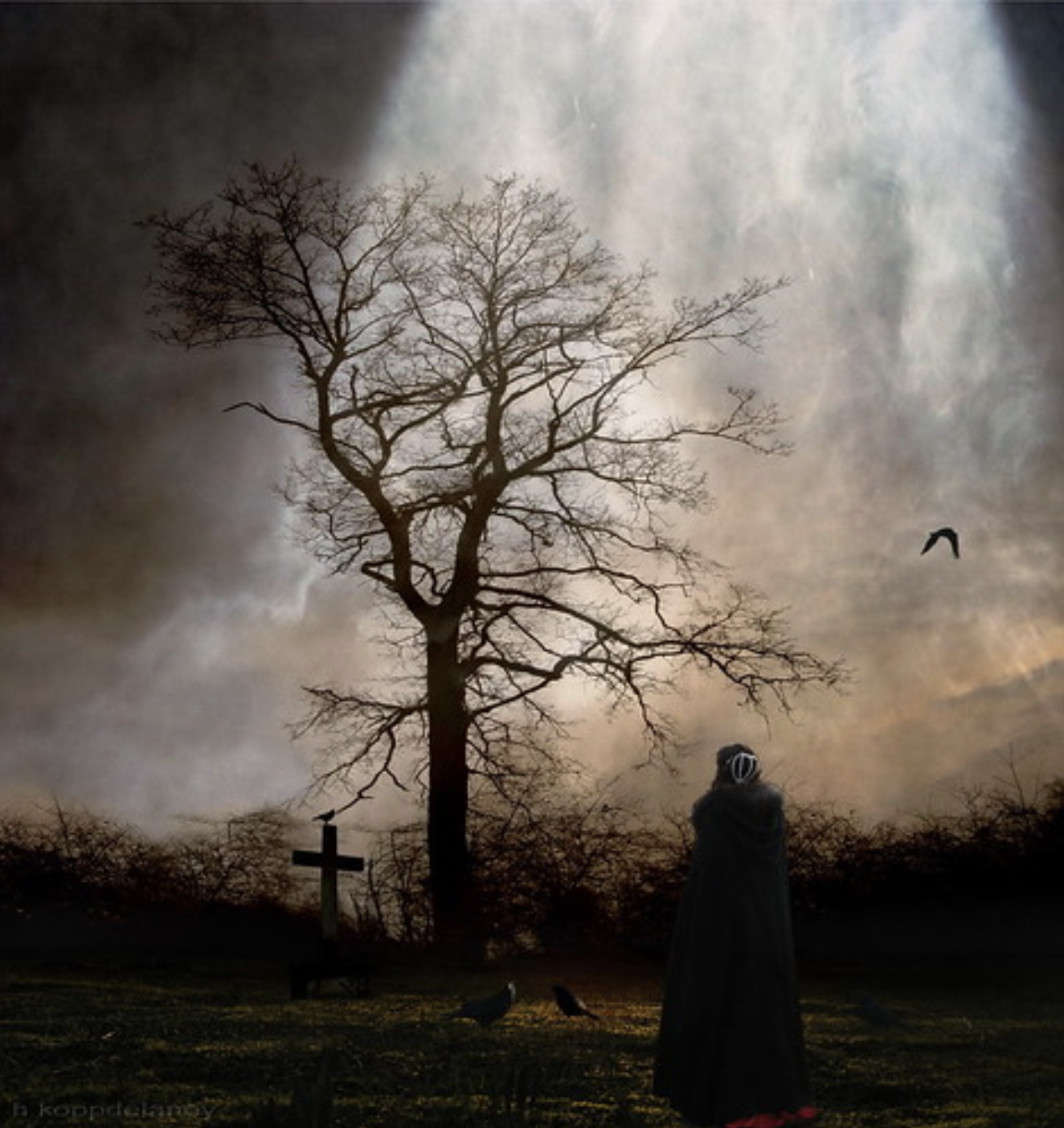“November Garden of Melancholy” by h.koppdelaney on Flickr is licensed with CC BY ND 2.0.
Samhain. The festival of Pomona. All Hallows’ Eve. These are holidays of the past, all undeniably connected to our current day Halloween. But what exactly is the history of Halloween?
First, we must start with the Iron Age Celts, who were a group of superstitious warriors living in the British Isles. One of their four most significant annual feasts was Samhain, pronounced “Sow-win.” On this night of Samhain, the Celts celebrated the change from summer to winter, from light to dark, from prosperity to scarcity. Since they believed that the line between the living and the dead became blurred, this was also a celebration of protection against evil spirits. Due to this weakness, Druids, the shaman of the Celts, built sacred bonfires to ward off these malicious spirits. Around these fires, the people would gather wearing animal costumes to hide. As an added precaution, they would also offer sacrifices of food and animals, sometimes even placing these offerings outside their doors. In addition to these measures, they would also carve out turnips to appear like spirits.
Since it was easy to blame mischievous souls, this was also a popular night for trouble-seeking youths to pull pranks upon other villagers. It was a free pass to completely decimate a neighbor’s garden and just blame Casper.
While there is some debate on how long this early Halloween lasted, the Gaelic story of “Cúchulainn’s Sickbed” noted that the festival was an entire week for Samhain, plus an additional three days before and after. During this time, meetings and contests were held, and massive feasting and drinking occurred. Granted, this is more of myth than truth; but considering the Irish were involved, it is not difficult to believe such a long drinking festival.
After Rome invaded, the Romans sought to persuade the natives to worship their gods instead. As per usual, the Celtics were understandably furious. Somewhat tactfully, the Romans decided to instead merge their beliefs with those of the Celts. Among the fatalities was Samhain, which morphed into a festival for the goddess of trees and fruits, Pomona. There is some speculation behind whether or not this somehow started the tradition of associating apples and bobbing for them to Halloween.
A few hundred years later, the Catholic Church turned the feast of Pomona into All Saints’ Day, which, if you’re Catholic, you know is a Holy Day of Obligation. In other words, Catholics are required to attend Mass that day. The traditions of Pomona’s day turned into traditions of All Saints’ Day with the offerings to the goddess turning into offerings for the poor. This day was also labeled as All Hallows’ Day. As a result, the night before Oct. 31 was considered All Hallows’ Eve.
Next, we have the American influence. Sadly, the holiday was not celebrated by the majority of New England due to their Puritan beliefs that it was “too Catholic.” Around the 1800s, the Irish immigrated to America pushed by widespread potato famine and cruel English practices. Due to their staunch Catholicism, All Saints’ Day, and therefore All Hallows’ Eve, carved a place on the American calendar. By 1920, stores were selling premade costumes and by the 1950s, costume parties and trick-or-treating became traditions in almost every household. Samhain was officially our highly commercialized Halloween. A side note here: this year’s U.S. consumer spending is projected to reach a staggering $10.14 billion. If the Celts could see us now, I wonder what they would think?
It is interesting to note how each of our holiday traditions were handed down generation after generation to where we are today. We have carved jack-o-lanterns, costumes, spooky auras and tricks thanks to Samhain. Even the treats left at the door to deter mischievous spirits are now left to deter mischievous children.
As for the festival of Pomona, we can thank the Romans for apples being so closely associated with Halloween. Unfortunately, apple bobbing is merely speculated as having originated here. Who can know for sure? However, it seems reasonable to assume that the goddess of fruits had a hand in the holiday’s apple orientation.
Next, we have All Saints’ Day. Sadly, this holiday does not seem to add any extra spark to Halloween. Despite this, it is responsible for Halloween arriving in America along with some 4.5 million Irish. Some Catholics celebrate All Saints’ Day with saint costumes, saint stories and quizzes and soul bags filled with candy. Clearly, this is not Halloween, but to some it is celebrated in its stead.
Halloween would not be what it is today without the influences of the Celts, Romans and Catholics. In fact, without even one of these groups, Halloween might not even exist. Now there’s a sad thought.

